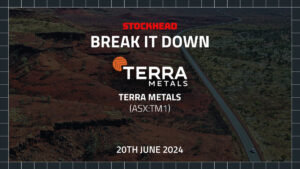Heritage survey to kick off on July 11 as Lycaon Resources prepares to drill its Stansmore niobium-REE project in the booming West Arunta exploration province
90km from the Luni discovery that turned WA1 into a billion dollar company
Drilling to start with exploration incentive scheme holes into key magnetic targets
Special Report: Looking for the next niobium discovery in the West Arunta region made famous by stock bolter WA1 Resources, Lycaon Resources has taken a major step to start drilling by announcing a heritage survey at its Stansmore project.
Located in one of WA’s few genuine remaining frontier exploration zones, the West Arunta region sits on the mining state’s border with the NT.
Since WA1 (ASX:WA1) discovered Luni, investors have been placing a watchful eye over the region, with only a few hints of additional discoveries to date.
A micro cap only a couple of years ago, WA1’s landmark find has turned it into a $1.18 billion explorer.
Lycaon (ASX:LYN) has some of the most prospective ground for a follow-up, with the Stansmore niobium-rare earths project containing 173km2 of ground 90km north of WA1’s Luni and P2 discoveries.
It already has two high priority magnetic anomaly drill targets at Stansmore and Volt, along with three secondary drill targets at Edi, Earl and Menlo, thought to be prospective for both niobium-REE carbonatite mineralisation or iron-oxide copper gold – the style of deposit found at BHP’s Prominent Hill and Carrapateena mines.
Key to Lycaon’s exploration efforts will be its relations with traditional owners, which are off to a good start with news a heritage survey will begin on July 11 at Stansmore.
It will focus on priority drill sites, access tracks and areas where ground-based gravity geophysical surveys will take place.
“We would like to thank the Central Desert Native Title Services and Parna Ngururrpa traditional owners for their efforts and cooperation to schedule this survey as soon as possible,” Lycaon technical director Thomas Langley said.
“We look forward to completing this survey with the Parna Ngururrpa people with the intent to clear targets for ground-based geophysics and drilling within Q3 this year.”
Some of the targets Lycaon aims to test once the Stansmore heritage survey is complete. Pic: LYN
What’s on the cards?
Exactly what will Lycaon be targeting after the heritage survey is complete?
At Stansmore it plans to target a 700m long magnetic feature, which clocks in at 400m wide and contains a target zone at a depth of around 150m.
The Volt anomaly is larger at a span of 3km, with a prospect there modelled at 600m by 800m from a depth of 200m.
Already Lycaon has received a $180,000 grant from the WA Government’s Exploration Incentive Scheme to test magnetic anomalies at Stansmore and Volt.
LYN believes cover is obscuring radiometric responses where the two co-funded drill holes will be sunk to test for iron-oxide alteration, copper, gold, niobium and rare earth mineralisation.
Another five drillholes have been planned by consultants SGC to test the magnetic gradient and other locations of the magnetic anomalies found in aeromag surveys.
Curiously, BHP once tested Stansmore with shallow rotary air blast holes looking for diamonds in 1983, but never got to a depth greater than 12m.
It departed a year later having failed to find kimberlites, blissfully unaware that 150m of cover was obscuring the primary target at depth.
Ironically BHP’s inability to pierce the cover could see it miss out on the prize it didn’t know it was looking for. Both WA1 and Encounter Resources (ASX:ENR) have found niobium nearby, with WA1’s Luni unique in the high grades of the intersections upwards of 2% niobium in places.
Most of the world’s niobium is produced from a single large, high grade source at CBMM in Brazil, but other producers run at well below 1% Nb.
A critical mineral in Australia, the corrosion resistant metal is largely used to strengthen and lightweight steel but it also has high tech applications including in turbine blades for jet engines and superconducting magnets used in MRI scanners and particle accelerators like the Large Hadron Collider at CERN.
While a relatively niche market from a commodity trading perspective, it is also used in glass used in corrective spectacles and camera lenses, jewellery, prosthetics, medical implants and capacitors in electronic circuits among other things.
This article was developed in collaboration with Lycaon Resources, a Stockhead advertiser at the time of publishing.
This article does not constitute financial product advice. You should consider obtaining independent advice before making any financial decisions.
The post Lycaon announces heritage survey as drilling for next WA niobium discovery draws near appeared first on Stockhead.






















